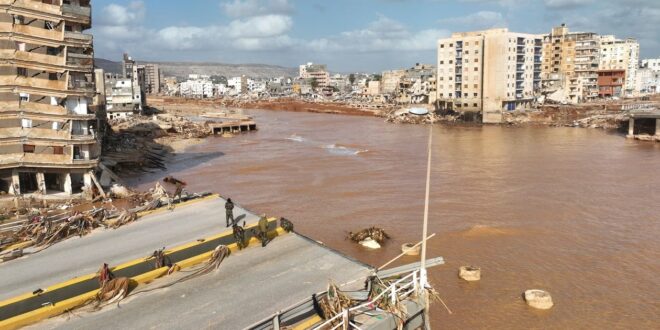Oil-rich Libya has been fighting to get its oil industry back on track over the last decade, since the Arab Spring and subsequent political instability. Following the failed presidential elections of 2021, it finally appeared that Libya’s oil and gas industry was getting back on track. More foreign investment was coming in and several discoveries showed great promise for the country’s oil fields. However, a recent devastating storm has plunged into a humanitarian crisis, meaning its energy revenues and international support will be vital for its recovery.
Storm Daniel, which hit Libya on 10th September, has left the country in a state of emergency. Humanitarian organisations estimate that tens of millions of dollars will be required to help those affected by the storm. More than 3,000 were killed in the storm and there are still over 9,000 people missing, with the death toll expected to continue increasing. The International Organisation for Migration estimates that around 40,000 people have been internally displaced because of the storm. Meanwhile, hospitals are at full capacity and are struggling to respond to patients’ needs.
Roula Abubaker, a spokesperson for the UN Development Programme, stated, “Humanitarian partners are requesting $71.4 million to respond to the most urgent needs of 250,000 people targeted out of the 884,000 people estimated to be in need, over the next three months.” However, the long-term financial implications of the storm are still uncertain. The immediate focus is on search and rescue missions, to be followed by the provision of food, water and medical support.
The hurricane was uncommon for the Mediterranean region, destroying dams in Libya’s eastern port cities of Derna, Soussa, Benghazi, and Albayda and causing flash flooding and heavy rainfall that destroyed much of the country’s infrastructure. The storm also affected Greece, Turkey, and Bulgaria, as well as other parts of North Africa.
To make the situation more complicated, Libya remains in a state of political limbo with Abdul Hamid Dbeibeh ruling as the internationally recognised prime minister in Benghazi in the west and a rival government, known as the Government of National Stability, claiming authority in the east of the country. Although the two powers appear to be working together on search and rescue efforts.
In addition to deeper financial and humanitarian implications, Libya’s oil and gas industry once again came under threat. Libya holds the biggest oil reserves in Africa, at 48 billion barrels, representing 39 precent of the continent’s total reserves. This is a major source of revenue for the North African country. After several years of instability, the industry has begun to rebound thanks to greater international investment over the last year. Initial terminal closures because of the storm have so far not affected Libya’s crude output, but Libya will likely need financial support from the IMF to help it recover.
In the days following the storm, global oil prices shot up almost 2 percent, to over $92 a barrel, as the energy market prepared for supply disruptions. That’s the highest price since November 2022. However, Libya has managed to maintain its 1.2 million barrels-per-day output during the disaster, suggesting that despite the crisis the country’s oil output may continue unaffected.
Libya has been working hard to get its oil industry back on track over the last year. In February, the National Oil Corporation (NOC) announced its strategic plan aimed at revitalising Libya’s oil and gas industry. It also launched a Strategic Programmes Office, in partnership with U.S.-based engineering firm Kellogg Brown & Root, to oversee its implementation. The NOC hopes it will improve transparency and coordination across the sector, as well as attract higher levels of investment.
The NOC announced earlier this year that it plans to launch an oil and gas licensing round in 2024. This will be the first in almost two decades and supports the national aim of producing over 2 million bpd of oil within the next three years. The oil and gas exploration company Zallaf Libya Oil and Gas also awarded a contract to Honeywell Universal Oil Products for the construction of the South Refinery, expected to cost between $500 million and $600 million. Meanwhile, the NOC and Russia’s Tatneft made a significant discovery in the Ghadames Basin onshore Libya, with an estimated output potential of 1,870 bpd.
Libya is currently in a state of emergency and will require a huge amount of funding to respond to the humanitarian crisis. It is currently continuing its search and rescue mission for thousands of people across the country. Thousands more have been displaced and need food, shelter and medical care. This will likely have a knock-on effect on its economy unless the IMF steps in to alleviate the burden on the state. However, Libya has so far managed to keep its oil and gas activities on track, which will bring in vital revenues to support the country’s economy.

 Iran Energy News Oil, Gas, Petrochemical and Energy Field Specialized Channel
Iran Energy News Oil, Gas, Petrochemical and Energy Field Specialized Channel



